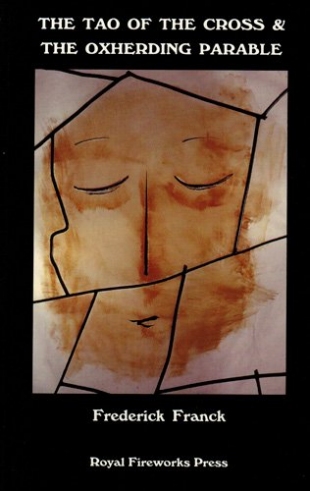In the late 1960s, artist and sculptor Frederick Franck and his wife Claske moved to Warwick, New York, where they converted the ruins of an eighteenth century watermill into an "oasis of peace and sanity" called Pacem in Terris (Peace on Earth). This transreligious sanctuary with its gardens and sculptures is dedicated to Pope John XXIII, Albert Schweitzer, and the Japanese Buddhist sage Daisetz T. Suzuki. This little paperback with some forty black-and-white and color plates, tells the story behind Franck's creation of the stained-glass windows called The Tao (Way) of the Cross and the Oxherding Parable.
In the first, Franck has created fourteen scenes of the suffering, indignities, pain, and death of Jesus on the cross, based on the traditional stations of the cross. The faces here draw us inward, and we see and agree with the Christian mystic Nicholas of Cusa who spoke of the "Face of faces veiled as in a riddle in every human face." To experience these works of art is to appreciate the mystery of the divine and the astonishing humanity of Jesus. The fifteenth station illustrates the light of the Resurrection, or what Franck calls the Unkillable Human. The elegant simplicity here takes away your breath!
In the ten Oxherding pictures, Franck provides a meditation on the human journey from confusion to the fullness of human consciousness. The series is housed in the same little house, called "The Other Shore," at Pacem in Terris as the Tao of the Cross. Seeing these works side-by-side is to come to a fresh appreciation of the lines of connection between Christianity and Buddhism in their advocacy of the essential self.
